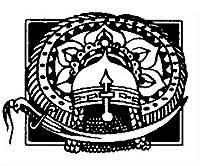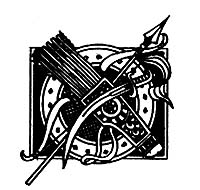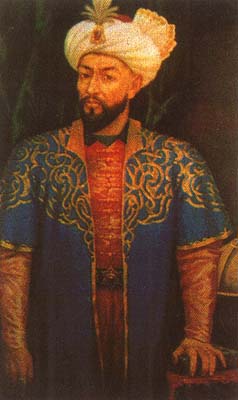 When
he reached Bukhara, according to Curzon's account, the Great Khan rode
into the Kalyan mosque, and, 'being told that it was the House of God,
dismounted, ascended the pulpit, and flinging the Koran on the ground,
cried out: "The hay is cut; give your horses fodder"-a permission which
his savage horde quickly interpreted as authority for a wholesale massacre.' When
he reached Bukhara, according to Curzon's account, the Great Khan rode
into the Kalyan mosque, and, 'being told that it was the House of God,
dismounted, ascended the pulpit, and flinging the Koran on the ground,
cried out: "The hay is cut; give your horses fodder"-a permission which
his savage horde quickly interpreted as authority for a wholesale massacre.'
He was humbler in front of the Kalyan minaret, staring
at it with 'a finger to his mouth in a curious token of amazement', and
sparing it while the rest of the city was razed. Within a few days the
blooming oasis was transformed into a lifeless desert.
 The
holy city went through an unholy 300 years after Genghis Khan's visit;
maybe he had shaken its faith in God. Ibn Battuta wrote in the mid-14th
century that 'all but a few of its mosques, academies and bazaars are now
lying in ruins. Its inhabitants are looked down upon because of their reputation
for fanaticism, falsehood and denial of truth. There is not one of its
inhabitants today who possesses any theological learning or makes any attempt
to acquire it.' The
holy city went through an unholy 300 years after Genghis Khan's visit;
maybe he had shaken its faith in God. Ibn Battuta wrote in the mid-14th
century that 'all but a few of its mosques, academies and bazaars are now
lying in ruins. Its inhabitants are looked down upon because of their reputation
for fanaticism, falsehood and denial of truth. There is not one of its
inhabitants today who possesses any theological learning or makes any attempt
to acquire it.'
 Bukhara
smelt bad too, and was known for its water-borne plagues. Tamerlane didn't
have much to do with it. His grandson Ulug Bek built a prototype here in
1417 for his more famous madrasa in Samarkand's Registan. But the water
stayed dirty. Anthony Jenkinson, a dour representative of the London Muscovy
Company, described it in 1559 as 'most unwholesome, for it breedeth sometimes
in men that drinke thereof... a worm... which commonly lieth in the legge
betwixt the flesh and the skinne, and is pluck out about the ancle with
great art and cunning, the Surgeons being much practised therein, and if
she breake in plucking out, the partie dieth, and every day she commeth
out about an inche, which is rolled up, and so worketh till shee be all
out.' Bukhara
smelt bad too, and was known for its water-borne plagues. Tamerlane didn't
have much to do with it. His grandson Ulug Bek built a prototype here in
1417 for his more famous madrasa in Samarkand's Registan. But the water
stayed dirty. Anthony Jenkinson, a dour representative of the London Muscovy
Company, described it in 1559 as 'most unwholesome, for it breedeth sometimes
in men that drinke thereof... a worm... which commonly lieth in the legge
betwixt the flesh and the skinne, and is pluck out about the ancle with
great art and cunning, the Surgeons being much practised therein, and if
she breake in plucking out, the partie dieth, and every day she commeth
out about an inche, which is rolled up, and so worketh till shee be all
out.'
[back]
|
